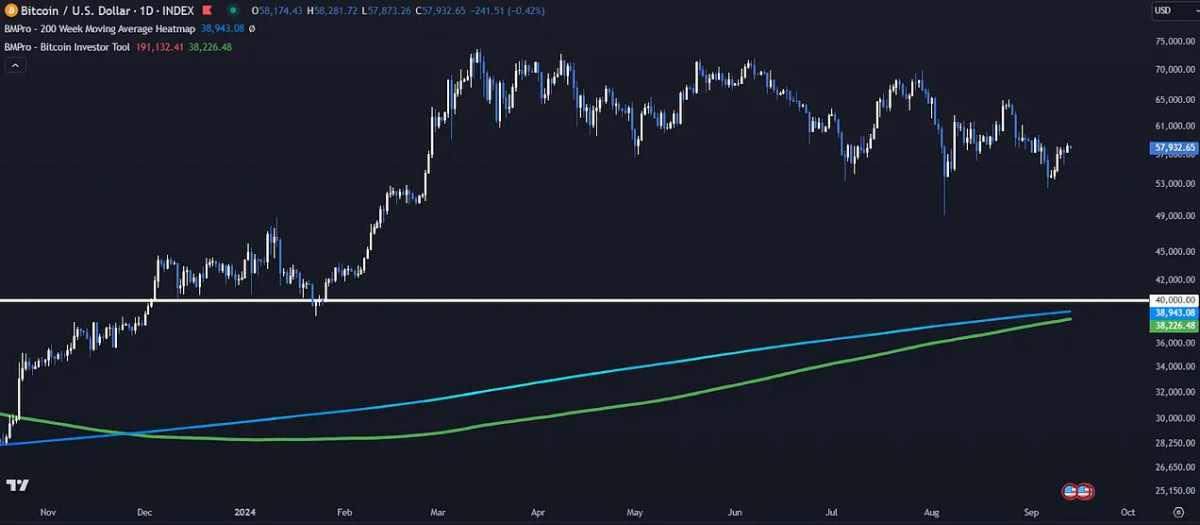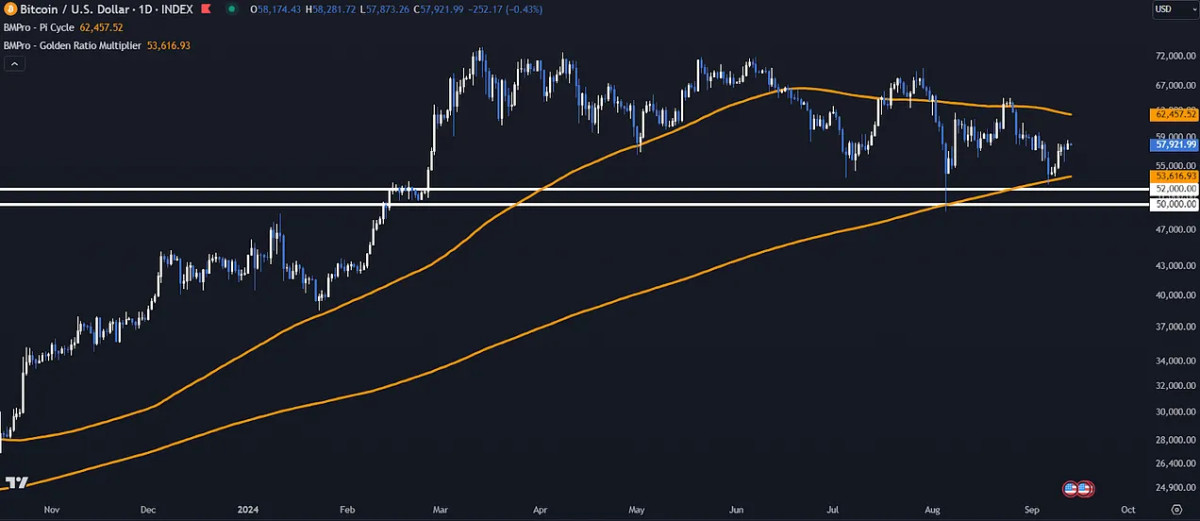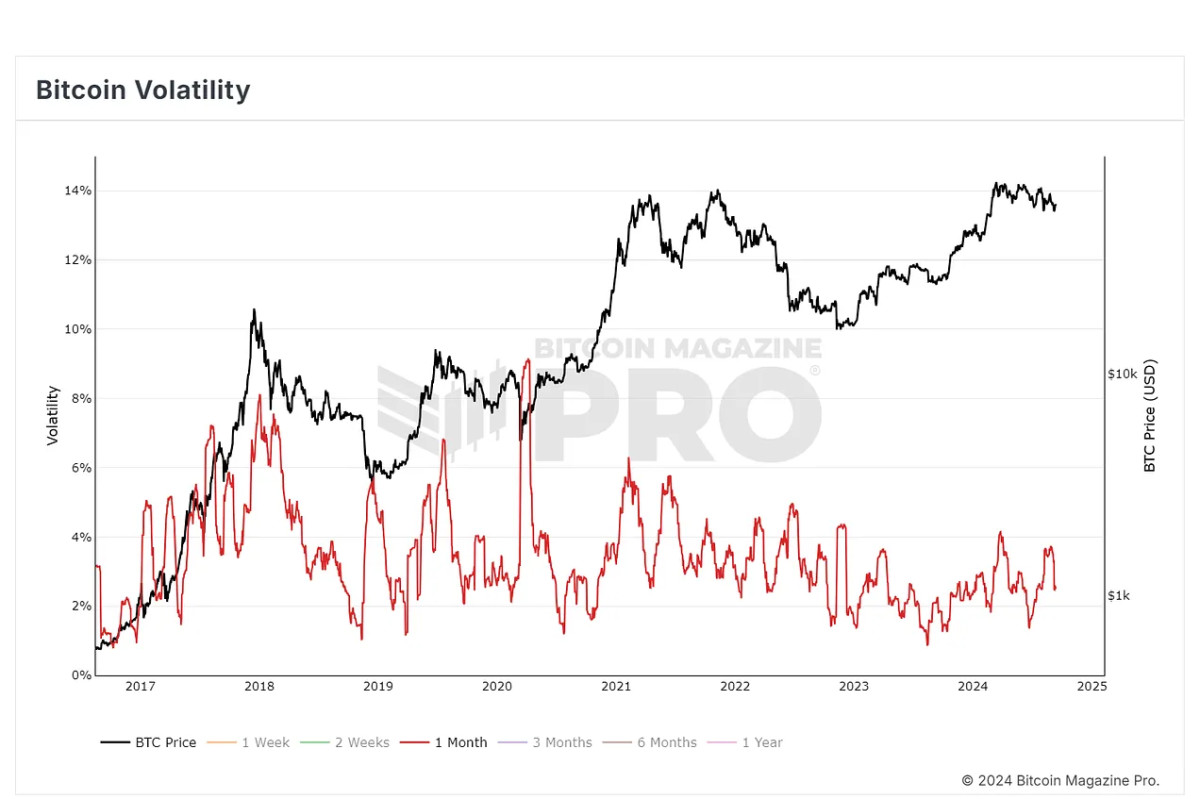Bitcoin Price Action: What to Expect Next
Bitcoin’s Path Forward: Insights into Price Targets, Support, and Resistance Zones

Bitcoin's recent price movements have caused concern among investors about what might come next. However, by looking at key indicators such as the 200-week moving average, Pi Cycle Top Indicator, and the Golden Ratio Multiplier, we can gain insights into potential support and resistance levels for Bitcoin.
Leaning Bearish?
In recent weeks, Bitcoin's price has fluctuated, dipping as low as $53,000 before stabilizing in the middle of our newly formed $50,000 to $60,000 range. If this bearish price action is to continue and price breaks to lower lows the 200-week moving average heatmap (blue line), a historically critical support level, is currently close to $39,000 but fast approaching $40,000 (white line). This round psychological level also aligns with the Bitcoin Investor Tool (green line), which has also converged with the 200-week moving average, could serve as potential downside targets.
Nearby Targets
Above current price there are several important levels closer to the current price that investors need to keep an eye on. The Pi Cycle Top Indicator (upper orange line) suggests a crucial resistance level around $62,000, based on the 111-day moving average. The Golden Ratio Multiplier (lower orange line) indicates that the 350-day moving average, currently around $53,000, has been a solid level of support during this market cycle, especially as this is close to the technical $52,000 support and significant psychological support of $50,000.
More Chop?
In the short term, Bitcoin could very well continue ranging between the low $50,000 region and the $60,000 resistance, similar to the range we had formed between $70,000 and $60,000 that led to fairly stagnant price action for a majority of 2024. Despite recent downturns, Bitcoin's long-term outlook is still promising. In the past, Bitcoin has experienced similar periods of fluctuating prices before eventually reaching new highs. However, this process can take some time, potentially weeks or even months, before a sustainable trend reversal occurs following periods of low volatility.
What's Your Reaction?



















